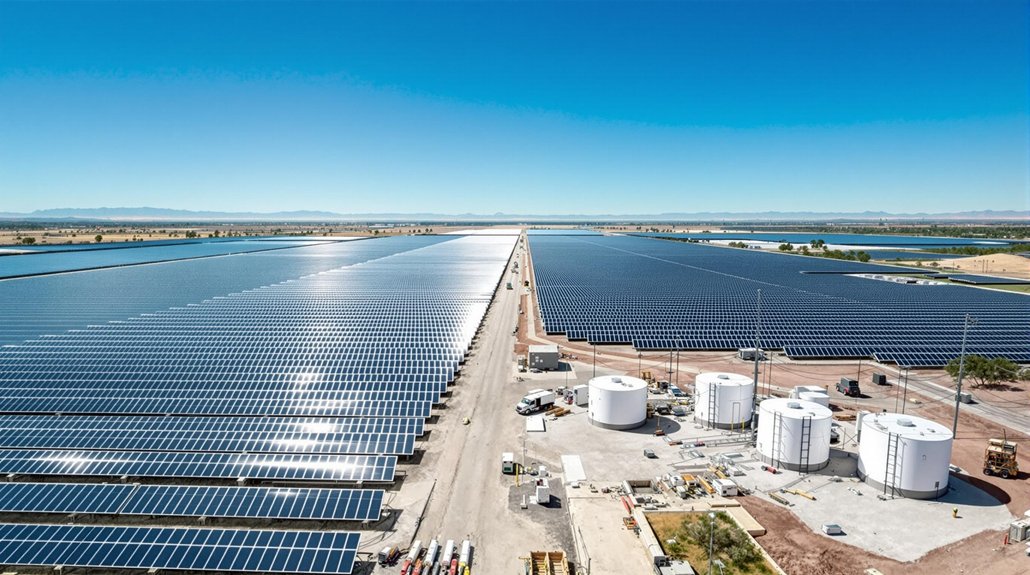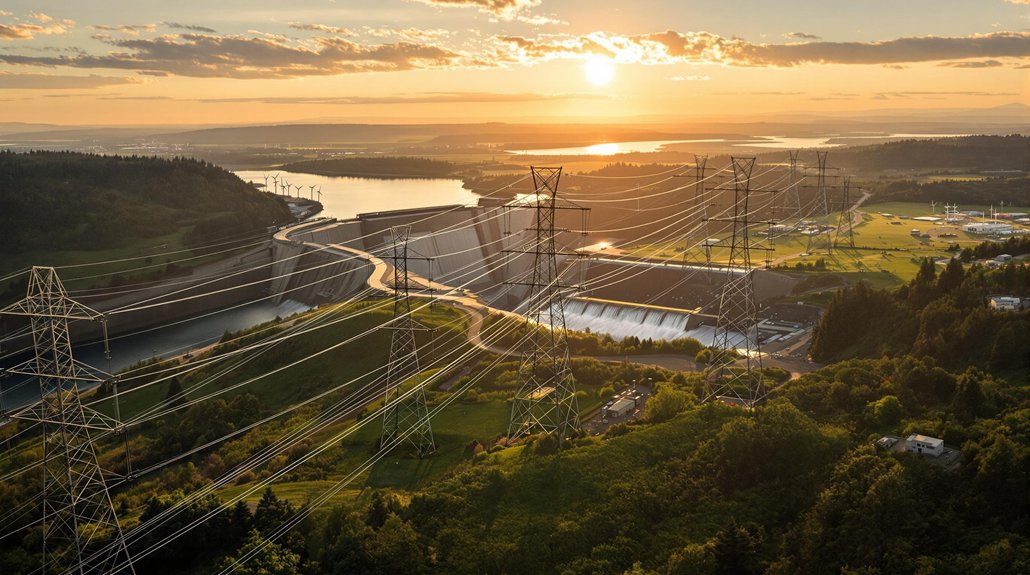US solar and storage installations are booming as federal permitting rules get streamlined. Solar capacity grew 74% globally in 2023, while US energy storage hit a record 12.3 GW in 2024. The Inflation Reduction Act is driving this surge with tax incentives that make clean energy more accessible. Despite interconnection challenges, over 28% of new residential solar systems now include battery storage. The clean energy shift continues to accelerate.
Nearly every sector of the clean energy industry is experiencing remarkable growth as both solar and energy storage installations reach unprecedented levels. Global solar installations jumped to 346 GW in 2023, a dramatic 74% increase from the previous year’s 199 GW. This growth rate is the fastest seen since 2011, with solar now accounting for about 75% of all new renewable energy capacity added worldwide.
The United States has been a major contributor to this trend. In 2024, the US installed nearly 50 GWdc of solar capacity, 21% more than in 2023. Utility-scale solar deployment was particularly strong, exceeding 41 GW and continuing to outpace new contract signings.
Energy storage is also seeing tremendous growth. US installations reached a record 12.3 GW in 2024, representing a 33% increase over the previous year. Total deployment encompassed 12,314 MW and 37,143 MWh, with Texas and California leading the way. These two states accounted for 61% of installed storage capacity in the fourth quarter of 2024. The residential storage market has shown especially impressive performance, exceeding 1,250 MW in 2024, which marks its highest level on record.
What’s especially notable is the increasing coupling of solar and storage technologies. In 2024, more than 28% of new US residential solar capacity was paired with storage, up from less than 12% in 2023. This trend is expected to continue as power reliability becomes a priority for consumers and utilities alike.
The Inflation Reduction Act (IRA) has played a considerable role in this growth. Through expanded tax credits and manufacturing incentives, the IRA is projected to boost US solar deployment by 66.9% over pre-IRA forecasts for the next five years. Federal support has enabled a steady installation volume of 43-45 GW annually. These incentives include the 30% tax credit that makes solar systems more financially accessible for homeowners looking to reduce carbon emissions while cutting electricity bills.
Despite this progress, challenges remain. Interconnection processes, high-voltage equipment procurement, and workforce availability continue to present obstacles. There remains significant untapped potential in many regions with high solar insolation that could further accelerate renewable capacity growth.
Nevertheless, demand still greatly exceeds supply in several US markets, indicating there’s substantial room for further expansion as the clean energy shift accelerates.
References
- https://ember-energy.org/latest-insights/2023s-record-solar-surge-explained-in-six-charts/
- https://seia.org/research-resources/us-solar-market-insight/
- https://cleanpower.org/news/u-s-energy-storage-monitor-q4-2024/
- https://www.utilitydive.com/news/energy-storage-2023-battery-projects-solar-acp/709851/
- https://seia.org/research-resources/solar-industry-research-data/








